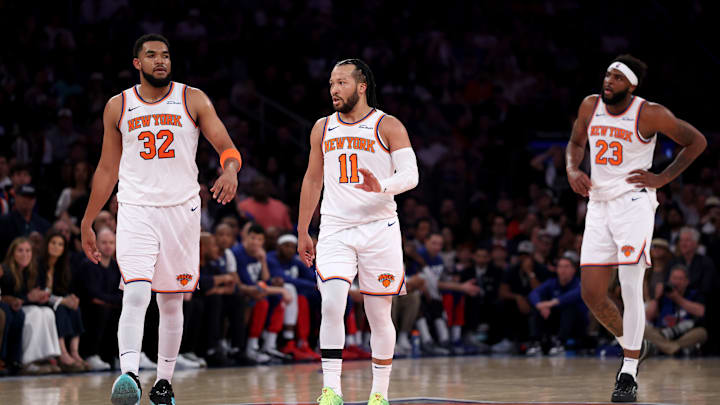Here’s a shocking stat to start your day: the New York Knicks’ starting lineup has logged 292 minutes together this postseason and holds a net rating of minus-8.89. That’s not just bad— it's the worst of any starting five still playing in the NBA playoffs. In fact, the Knicks are the only remaining team whose starters are operating at a negative net rating.
It’s a number that feels impossible, yet here the Knicks are, staring down a 0–1 hole in the Eastern Conference Finals against the Indiana Pacers. A team that won 51 games in the regular season has suddenly forgotten how to play connected basketball when it matters most.
At the heart of the unraveling? Defense — or a startling lack of it.
Game 1 was a defensive disaster. Indiana started the game shooting a perfect 7-for-7, slicing through New York’s halfcourt defense like it wasn’t even there. In the final 3:44 of regulation, the Pacers erased a 14-point deficit thanks to wide-open perimeter looks, blown rotations, and one glaring mismatch: Karl-Anthony Towns in drop coverage. Tyrese Haliburton, Myles Turner, and Aaron Nesmith had their way with Towns, exploiting space and hesitation every trip down.
The problem isn’t new — but the solution is hiding in plain sight.
Mitchell Robinson. And more of him.
When Jalen Brunson picked up his fifth foul early in the fourth quarter, Robinson checked in to join Towns on the floor. What followed was the Knicks’ best stretch of the game: a 14–0 run that flipped a tense game into a commanding 16-point lead. That frontcourt pairing — Robinson and Towns — was suffocating on defense, fluid on offense, and utterly dominant for those few minutes.
Want proof? Of the Knicks’ seven most effective two-man lineups this postseason, four include Mitchell Robinson. His pairing with Towns has yielded a plus-37 point differential in just 97 minutes. Robinson covers for Towns' defensive shortcomings, while Towns provides the offensive punch Robinson lacks. It’s symbiotic basketball.
The Knicks outscored the Pacers by 12 points in Game 1 when they were on the floor together but only used the pairing for seven minutes in a 53-minute overtime game.
So why aren’t they playing more minutes together?
That question remains unanswered. Head coach Tom Thibodeau has acknowledged the effectiveness of the pairing, yet still limits their overlap. Whether it’s a matter of rotations, matchups, or old habits, it’s costing the Knicks momentum — and potentially the series.
What makes this even more confounding is that, on paper, this Knicks team should stack up with anyone. A high-IQ point guard, athletic wings, and dual-threat bigs — it’s the blueprint. Look at the Celtics: they’ve built a powerhouse on similar principles.
But the Knicks continue to make one recurring mistake in the playoffs: underestimating the opponent. It happened in Game 5 against the Pistons. It happened again against Boston. And Jalen Brunson even admitted it happened late in Game 1 against Indiana.
What changes that dynamic? Robinson.
His presence forces the Knicks to defend at a higher level, raises the intensity, and puts the team back on balance. He’s not the flashiest player, but in this series, he might be the most important one.
Heading into Game 2, Thibodeau has to embrace change — not fear it. Mitchell Robinson has earned more minutes, and the Knicks have earned the right to see what this lineup can truly become when they stop playing it safe.
If New York wants to fight back in this series, it starts with something simple: put your best combinations on the floor, and trust them to do what they've proven they can.
